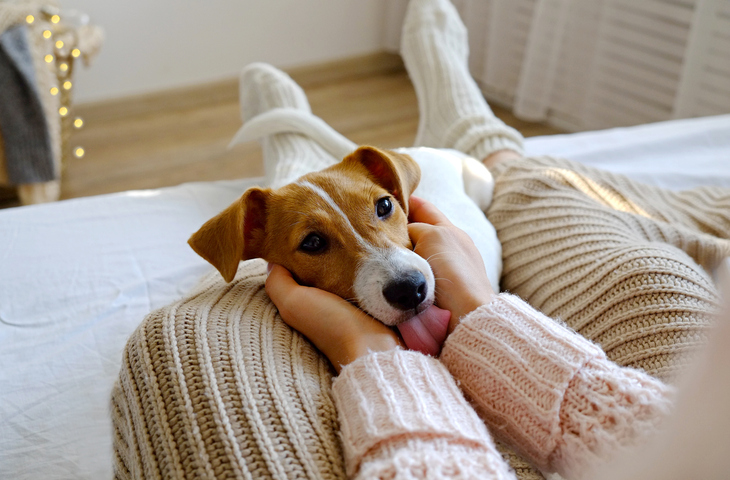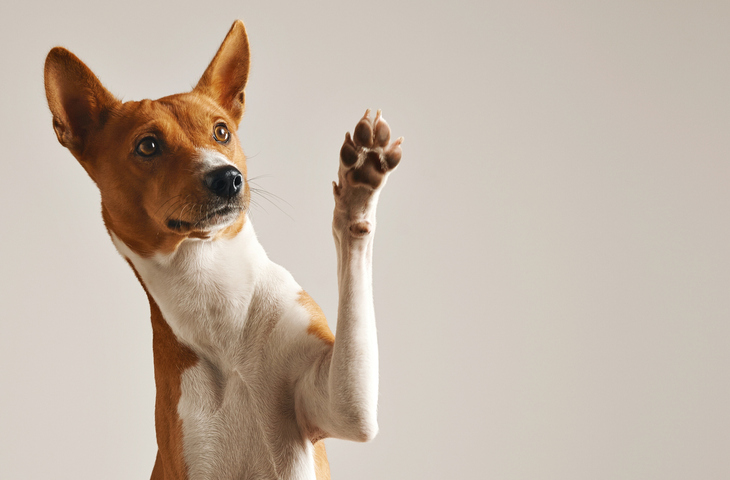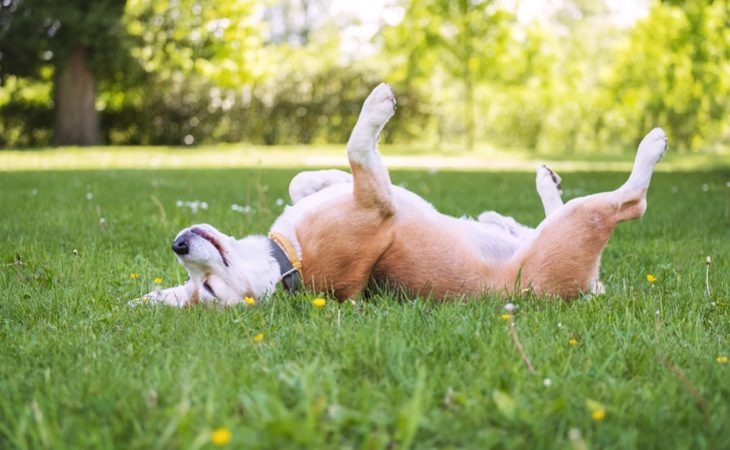Our pets cannot communicate with us the way we communicate with other humans. Instead, they use their body language as a primary way to communicate with us.
Dogs are appreciated for their expressiveness. They know how to show us their affection and they are particularly social. But their body language is not only used to express their affection. For example, they use their body to communicate how they are feeling — stressed, happy, sick, or angry.
In order to be the best dog owner you can be and respond to your dog’s requests, it is important that you know how to decode their body language. In this article, we’ll give you some helpful tips to help you better understand them.
Typical body language
Dogs use their body to communicate with us everyday. It’s important to be able to decipher them in order to know the best way to react to them.
Moving their ears
Dogs use their ears a lot to express themselves. When they lean their ears forward, it means that they feel reassured or confident. However, dogs also lean their ears forward and show their fangs when they are ready for action.
Raised hackles
Similar to many other furry animals, raised hackles is not a good sign. Hackles are the long hairs found on the backs of dogs. Raised hackles show that they are scared, but it can also show that they are trying to dominate someone. When they do this, is is best not to approach or touch the dog.
Wagging their tail
There is nothing more common than a dog wagging its tail. Usually, this is an sign of joy, however, it can also have other meanings.
If your dog is wagging their tail up and down toward the back legs, your dog is afraid. You should do your best to reassure them in this case. However, if the tail is raised high, your dog is expressing its dominance, and if they are wagging their tail, they are spreading spreading their scent to mark their territory.
Lastly, when dogs swing their tail quickly from left to right, it means that they are happy to see you.

Licking
Licking is very normal behavior for dogs. Most of the time, dogs do this to clean their coat. However, when they do this to other animals, it has a more social connotation. A mother, for example, licks her young out of affection. When mothers target their puppies’ stomach, they are doing this to help them digest food better.
Dogs may also lick other dogs to show their submission or affection. By doing this, they are showing the other dogs their peaceful intentions.
Similarly, dogs may lick you to soothe you when they sense that you are stressed or anxious.
Lying down on their back
When dogs lie on their back, they are usually expressing their submission. By putting themselves at a lower level than you or another dog, they are showing a very sensitive and vulnerable area of their body—their belly.
This gesture also expresses their fulfillment.
If a dog lies on his back and lifts his hind legs while you pet him, it may also mean that he is begging for you to pet his belly or that he has fleas in that area.
Moving their pupils
Dogs also use their eyes to express how they are feeling. If you want to know the emotional state of your pet, pay attention to their eyes.
Normal-sized pupils mean that your dog is feeling good. Dilated pupils can mean that the dog is excited or stressed. Dilated pupils can also express extreme concentration during play.
When they have constricted pupils, this usually expresses discomfort.
Sniffing another dog’s private parts
Sniffing another dog’s private parts is a mode of communication specific to dogs. Dogs do this to know who they are dealing with. Their noses allow them to detect thousands of different odors.
By sniffing the private parts of another dog, they are able to detect the pheromones which are released from the anal glands. For example, a dog is able to tell if a female dog is in heat.
Dogs of the same sex may also sniff each other’s private parts to exchange other kinds of information. It prevents dogs from being aggressive to one another.

Raising their paw
Dogs raise their paws to demand attention. This probably means that they want to play or they are asking you to feed them.
Understanding your dog’s sounds
Dogs use a wide range of vocal sounds to express themselves. Understanding your dog’s body language also means understanding the sounds that they associate with their gestures. Here are the most common sounds that dogs make.
Barking
Depending on its tone and frequency, barking can express joy, especially when the sound is high-pitched.
Dogs can also bark to threaten an individual. When this is the case, the sound produced is more muffled. Successive barks can express frustration or boredom.
Note that you can train your dog to bark under certain conditions. However, keep in mind that barking is the most common means of communication used by dogs to address humans. Despite training, dogs will instinctively bark to communicate.

Growling
Growling should always be interpreted as a warning. Dogs growl to signal their discomfort in a situation, or with another individual. They are warning you to stay away.
Growling is also used to mark their territory.
In general, you should always consider this noise as a warning signal. It is important to quickly decode their growl in order to avoid aggression or to help dogs when they feel threatened or hurt.
Howling
Dogs are known for barking, but they can also howl like a wolf. It is considered a natural way to communicate.
A howling dog may be expressing distress or echoing the howling of another dog in the neighborhood. Keep in mind that their ears are particularly sensitive.
Also, note that some dog breeds are more predisposed to howling than others. For example, the Husky, the Beagle, and the Cocker Spaniel are very big howlers.
Whining
Dogs whine to express how they are feeling. They might whine because they want your attention or because they are bored or frustrated.
If your dog whines when you pet them or touch them in a specific area, this means that they are in pain. You should take your dog to the vet immediately.

